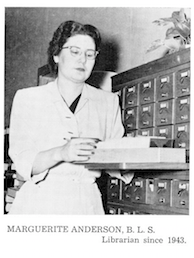In September our colleagues in Technical Services and Cataloging added 586 items to Special Collections holdings. Big gains this month for several Center for Restoration Studies collections with 415 items in the main print collection (which we call REST), plus 40 A/V items and 25 new titles of unbound periodicals. We added 80 new items to the Taylor Hymnal Collection. Some of the additions are newly published, others are new-to-us, and still others represent a second copy or a new-to-us edition or printing. In fact several of the print additions to the REST collection are variant printings and editions. Many of the new entries this month are of tracts and pamphlets. We should expect to see sustained progress on this project in the months ahead, along with ongoing work on periodical titles for which we have unbound issues. I anticipate very few of these will be held by any other institution, so the original cataloging will see an uptick in coming months.

Abilene Christian College. Prickly Pear, Yearbook of Abilene Christian College, 1952, yearbook, 1952; Abilene, Texas. University of North Texas Libraries, The Portal to Texas History, https://texashistory.unt.edu; crediting Abilene Christian University Library.
Our goal is to build a comprehensive research-level collection of print materials by, for, and about the Stone-Campbell Restoration Movement. But beyond assembly and preservation, a collection should be discoverable by those who need the information. Collecting and preserving is only part of our task; those objects must be described and made available. Thanks to the close and careful work of our colleagues upstairs, who describe our holdings, these materials are now discoverable. By discoverable I mean a patron can utilize our online catalog (such as by searching by author, or title, or subject) to find these materials.
586 new items…cataloged, shelved, and ready for research: Continue reading
